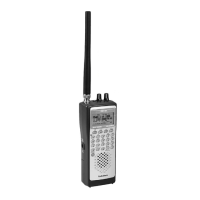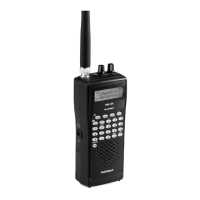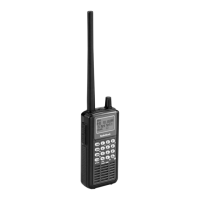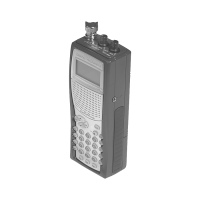60
Advanced Programming
6. When the scanner has successfully received all data, turn the scanner off
and remove the cable.
7. Turn the scanner on again.
CTCSS/DCS
Continuous Tone Coded Squelch System (CTCSS) and Digital Coded
Squelch (DCS) are subaudible tone signaling systems sometimes referred
to as PL or DPL (Motorola’s trademarked terms for Private Line and Digital
Private Line, respectively). CTCSS and DCS are used only for FM signals
and are usually associated with both amateur and commercial two-way
frequencies. These systems make use of a special subaudible tone that
accompanies a transmitted signal.
CTCSS and DCS are used for many purposes. In many cases, CTCSS and
DCS are used to restrict access to a commercial repeater, so that only those
units which transmit the correct tone along with their signal can “talk” to the
repeater. CTCSS and DCS are also used in areas that receive interference
where there are several stations with output frequencies that interfere with
each other.
A scanner equipped with CTCSS and DCS allows squelch to open only when
the tone you have programmed with a specific frequency is received along
with a transmission.
Programming CTCSS/DCS Codes
1. From Manual Mode, press ENT/PGM to put the scanner in Programming
Mode.
2. Press FUNC + CL/CTCSS/DCS to put the scanner in Program CTCSS/
DCS Mode. “NO TONE” flashes on the bottom-right corner.
NO TONE
3. Repeatedly press FUNC + CL/CTCSS/DCS to put the scanner in
program CTCSS Mode when you want to program a CTCSS frequency.
Note: To program a DCS code, repeatedly press FUNC, and then press
CTCSS/DCS until DCS code appears on the display.
4. Press
T or S to select a CTCSS frequency or use the number keys to
enter a valid frequency.
5. Press ENT/PGM to store the CTCSS frequency.
6. Repeat steps 2 – 5 until you enter all the desired frequencies.
You can search for the following CTCSS frequencies and DCS codes.
CTCSS Frequencies (Hz)
67.0 69.3 71.9 74.4 77.0 79.7
82.5 85.4 88.5 91.5 94.8 97.4
100.0 103.5 107.2 110.9 114.8 118.8
123.0 127.3 131.8 136.5 141.3 146.2
151.4 156.7 159.8 162.2 165.5 167.9
171.3 173.8 177.3 179.9 183.5 186.2
189.9 192.8 196.6 199.5 203.5 206.5
210.7 218.1 225.7 229.1 233.6 241.8
250.3 254.1
DCS Codes (Octal)
023 025 026 031 032 036 043 047
051 053 054 065 071 072 073 074
114 115 116 122 125 131 132 134
143 145 152 155 156 162 165 172
174 205 212 223 225 226 243 244
245 246 251 252 255 261 263 265
266 271 274 306 311 315 325 331
332 343 346 351 356 364 365 371
411 412 413 423 431 432 445 446
452 454 455 462 464 465 466 503
506 516 523 526 532 546 565 606
612 624 627 631 632 654 662 664
703 712 723 731 732 734 743 754
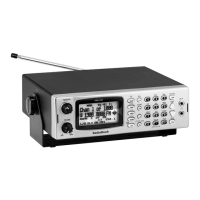
